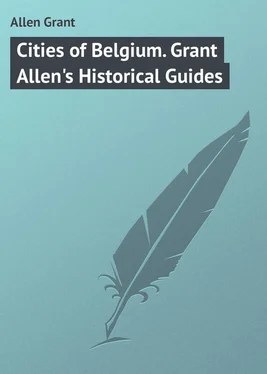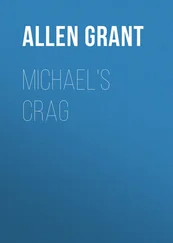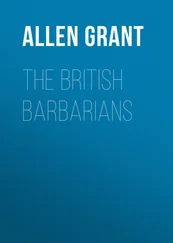Grant Allen - Cities of Belgium. Grant Allen's Historical Guides
Здесь есть возможность читать онлайн «Grant Allen - Cities of Belgium. Grant Allen's Historical Guides» — ознакомительный отрывок электронной книги совершенно бесплатно, а после прочтения отрывка купить полную версию. В некоторых случаях можно слушать аудио, скачать через торрент в формате fb2 и присутствует краткое содержание. ISBN: , Издательство: Иностранный паблик, Жанр: foreign_language, foreign_prose, на английском языке. Описание произведения, (предисловие) а так же отзывы посетителей доступны на портале библиотеки ЛибКат.
- Название:Cities of Belgium. Grant Allen's Historical Guides
- Автор:
- Издательство:Иностранный паблик
- Жанр:
- Год:неизвестен
- ISBN:http://www.gutenberg.org/ebooks/49690
- Рейтинг книги:3 / 5. Голосов: 1
-
Избранное:Добавить в избранное
- Отзывы:
-
Ваша оценка:
- 60
- 1
- 2
- 3
- 4
- 5
Cities of Belgium. Grant Allen's Historical Guides: краткое содержание, описание и аннотация
Предлагаем к чтению аннотацию, описание, краткое содержание или предисловие (зависит от того, что написал сам автор книги «Cities of Belgium. Grant Allen's Historical Guides»). Если вы не нашли необходимую информацию о книге — напишите в комментариях, мы постараемся отыскать её.
Cities of Belgium. Grant Allen's Historical Guides — читать онлайн ознакомительный отрывок
Ниже представлен текст книги, разбитый по страницам. Система сохранения места последней прочитанной страницы, позволяет с удобством читать онлайн бесплатно книгу «Cities of Belgium. Grant Allen's Historical Guides», без необходимости каждый раз заново искать на чём Вы остановились. Поставьте закладку, и сможете в любой момент перейти на страницу, на которой закончили чтение.
Интервал:
Закладка:
ORDER OF THE TOUR
IF possible, visit the cities of Belgium in the order in which they are treated in this Guide: – Bruges first; then Ghent, Brussels, and Antwerp. For this order you will find very good reasons. Bruges is the most antique in tone and the least spoiled of all the Flemish towns; it best exhibits the local peculiarities we have here specially to consider; and it leads up naturally to the other cities. It is true, Memling, the great painter whom we have chiefly to study at Bruges, is later in date than Jan van Eyck, whose principal work (with that of his brother Hubert) is to be seen at Ghent. But historical sequence in this minor matter is somewhat less important than a due apprehension of the general air of an old Flemish town such as those in which the art of the Van Eycks arose; and besides, there is at least one characteristic Van Eyck at Bruges, while there are many Memlings for comparison in other cities.
As a rule, too little time is given by tourists to Bruges and Ghent, and too much to Brussels. I should advise three or four days each to the first-named towns, and a week to the capital.
Those who intend to combine a visit to Hollandin the same tour should certainly see Belgium in the order here given first, and then proceed to Rotterdam, the Hague, Haarlem, and Amsterdam. For such a sequence, which is geographically the easiest, is also chronologically natural. Bruges is the most mediæval of all the towns, and has for its principal great artist Memling. Ghent comes next, with the Van Eycks and a few later painters. Brussels represents the end of the Middle Ages, and contains a general metropolitan collection of early and middle Flemish art. Antwerp gives us in particular Quentin Matsys and his contemporaries, as well as Rubens and Van Dyck. And the Dutch towns lead us on through Van Dyck and the later transitionals to Rembrandt, Van der Helst, Frans Hals, and the other mighty masters of Holland. I may add that as the arrangement of this Guide is roughly chronological, the tourist will use it best if he follows its order.
The Ostend routetakes the towns naturally in the sequence I suggest. Visitors arriving by Harwichor Calaisshould not stop first at Antwerp or Brussels, but go straight to Bruges, and then double back again.
I
BRUGES
A. ORIGINS OF BRUGES
IN a lost corner of the great lowland flat of Flanders, defended from the sea by an artificial dyke, and at the point of intersection of an intricate network of canals and waterways, there arose in the early Middle Ages a trading town, known in Flemish as Brugge, in French as Bruges(that is to say, The Bridge), from a primitive structure that here crossed the river. (A number of bridges now span the sluggish streams. All of them open in the middle to admit the passage of shipping.) Bruges stood originally on a little river, the Reye, once navigable, now swallowed by canals: and the Reye flowed into the Zwin, long silted up, but then the safest harbour in the Low Countries. At first the capital of a petty Count, this land-locked internal harbour grew in time to be the Venice of the North, and to gather round its quays, or at its haven of Damme, the ships and merchandise of all neighbouring peoples. Already in 1200 it ranked as the central mart of the Hanseatic League. It was the port of entry for English wool and Russian furs: the port of departure for Flemish broadcloths, laces, tapestries, and linens. Canals soon connected it with Ghent, Dunkirk, Sluys, Furnes, and Ypres. Its nucleus lay in a little knot of buildings about the Grand’ Place and the Hôtel de Ville, stretching out to the Cathedral and the Dyver; thence it spread on all sides till in 1362 it filled the whole space within the existing ramparts, now largely abandoned or given over to fields and gardens. It was the wealthiest town of Europe, outside Italy. In the 14th century, Bruges was frequently the residence of the Counts of Flanders; and in the 15th it became the seat of the brilliant court of the Dukes of Burgundy. Under their rule, the opulent burghers and foreign merchants began to employ a group of famous artists who have made the city a place of pilgrimage for Europe and America, and to adorn the town with most of those buildings which now beautify its decay.
The foreign traders in Bruges lived in “factories” or guilds, resembling monasteries or colleges, and were governed by their own commercial laws. The Bardi of Florence were among its famous merchants: the Medici had agents here: so had the millionaire Fuggers of Augsburg.
Bruges is the best place in which to make a first acquaintancewith the towns and art of Flanders, because here almost all the principal buildings are mediæval, and comparatively little that is modern comes in to mar the completeness of the picture. We see in it the architecture and the painting of Flanders, in the midst of the houses, the land, and the folk that gave them origin. Brussels is largely modernised, and even Ghent has great living manufactures; but Bruges is a fossil of the 15th century. It was the first to flourish and the first to decay of the towns of Belgium.
The declineof the town was due partly to the break-up of the Hanseatic system; partly to the rise of English ports and manufacturing towns; but still more (and especially as compared with other Flemish cities) to the silting of the Zwin, and the want of adaptation in its waterways to the needs of great ships and modern navigation. The old sea entrance to Bruges was through the Zwin, by way of Sluys and Kadzand; up that channel came the Venetian merchant fleet and the Flemish galleys, to the port of Damme. By 1470, it ceased to be navigable for large vessels. The later canal is still open, but as it passes through what is now Dutch territory, it is little used; nor is it adapted to any save ships of comparatively small burden. Another canal, suitable for craft of 500 tons, leads through Belgian territory to Ostend; but few vessels now navigate it, and those for the most part only for local trade. The town has shrunk to half its former size, and has only a quarter of its mediæval population. The commercial decay of Bruges, however, has preserved its charm for the artist, the archæologist, and the tourist; its sleepy streets and unfrequented quays are among the most picturesque sights of bustling and industrial modern Belgium. The great private palaces, indeed, are almost all destroyed: but many public buildings remain, and the domestic architecture is quaint and pretty.
Bruges was the mother of the arts in Flanders. Jan van Eyck lived here from 1428 to 1440: Memling, probably, from 1477 till 1494. Caxton, the first English printer, lived as a merchant at Bruges (in the Domus Anglorum or English factory) from 1446 to 1476, and probably put in the press here the earliest English printed book (though strong grounds have been adduced in favour of Cologne). Colard Mansion, the great printer of Bruges at that date, was one of the leaders in the art of typography.
Those who desire further information on this most interesting town will find it in James Weale’s Bruges et ses Environs , an admirable work, to which I desire to acknowledge my obligations.
At least two whole days should be devoted to Bruges: more if possible. But the hasty traveller, who has but time for a glimpse, should neglect the churches, and walk round the Grand’ Place and the Place du Bourg to the Dyver: spending most of his time at the **Hôpital de St. Jean, which contains the glorious works of Memling. These are by far the most important objects to be seen in the city. The description in this Guide is written from the point of view of the more leisurely traveller.
Читать дальшеИнтервал:
Закладка:
Похожие книги на «Cities of Belgium. Grant Allen's Historical Guides»
Представляем Вашему вниманию похожие книги на «Cities of Belgium. Grant Allen's Historical Guides» списком для выбора. Мы отобрали схожую по названию и смыслу литературу в надежде предоставить читателям больше вариантов отыскать новые, интересные, ещё непрочитанные произведения.
Обсуждение, отзывы о книге «Cities of Belgium. Grant Allen's Historical Guides» и просто собственные мнения читателей. Оставьте ваши комментарии, напишите, что Вы думаете о произведении, его смысле или главных героях. Укажите что конкретно понравилось, а что нет, и почему Вы так считаете.












